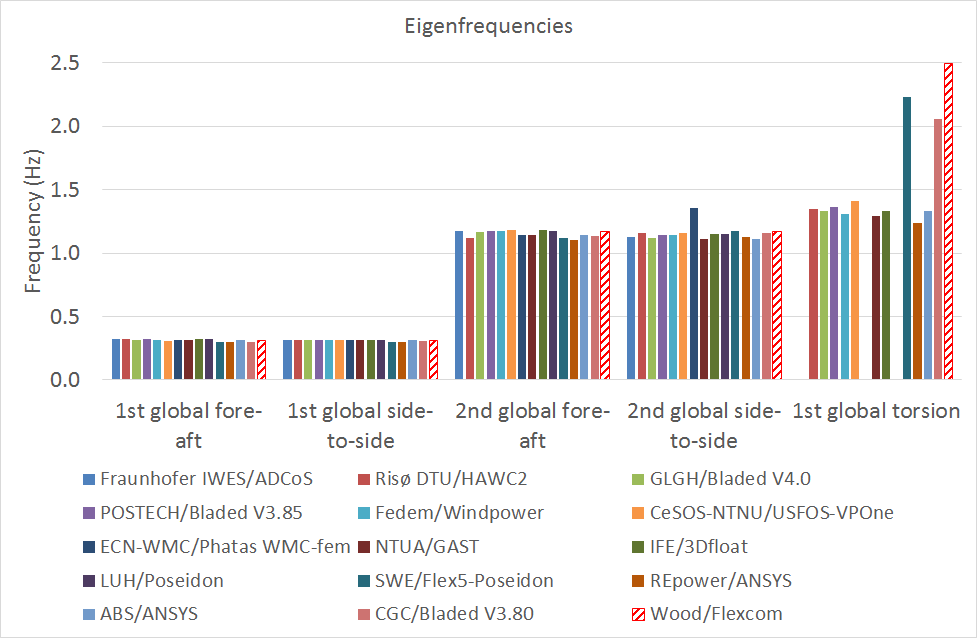Four separate eigenanalyses were studied in OC4 Phase I.
•OC4 P1 LC1.0a: Flexible tower and jacket, rigid RNA. No gravity or damping, natural frequencies and mode shapes extracted.
•OC4 P1 LC1.0b: Flexible tower and jacket, flexible RNA. No gravity or damping, natural frequencies and mode shapes extracted.
•OC4 P1 LC1.0c: Flexible tower and jacket, rigid RNA. Gravity and structural damping included, damped frequencies and mode shapes extracted.
•OC4 P1 LC1.0d: Flexible tower and jacket, flexible RNA. Gravity and structural damping included, damped frequencies and mode shapes extracted.
For the purposes of this study, only OC4 P1 LC1.0a is considered.
•The rotating blades are not explicitly modelled in Flexcom 8.12.1 - refer to Software Modelling Limitations for further details). So it is not possible to simulate a fully flexible RNA. So this rules out OC4 P1 LC1.0b and OC4 P1 LC1.0d.
•Flexcom's modal analysis solver computes natural frequencies and associated mode shapes (refer to Modal Analysis for further details). It does not consider damped frequencies and associated mode shapes. So this rules out OC4 P1 LC1.0c.
The eigenfrequencies predicted by Flexcom for the entire structure (jacket plus tower) show close agreement with the other software tools. There are no eigenfrequencies associated with the blades as this load case considers a rigid RNA.
•